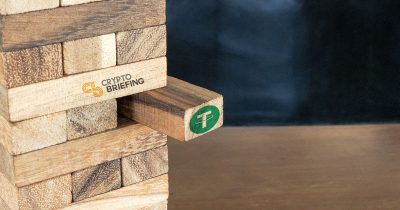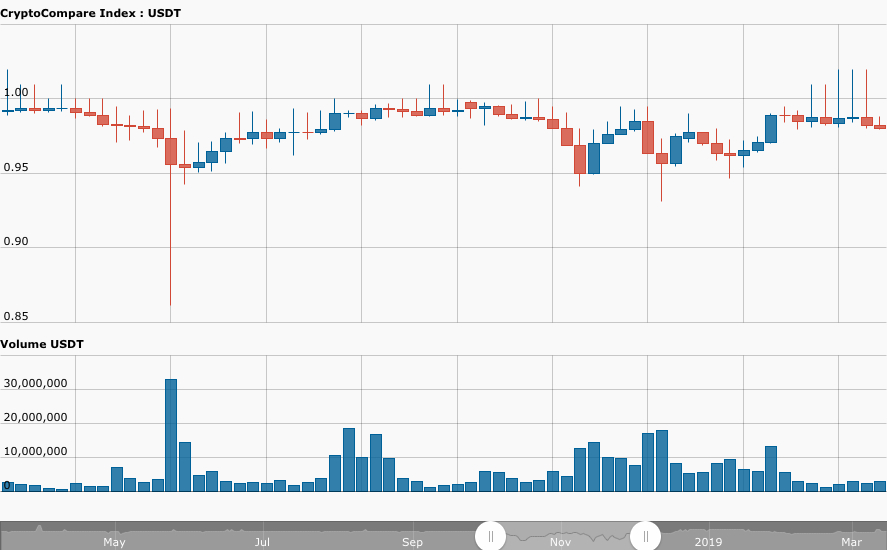Analysis: New Tether Model Could Make Prices Unstable

Share this article
Cryptocurrency communities are finding more reasons to worry about Tether, the leading stablecoin by market capitalization. A post on Reddit notified the community that Tether (USDT) had updated how it holds its collateral.
In an update to their website, Tether stated that company would now back tether tokens not only with “traditional currency,” but also “cash equivalents and, from time to time… other assets and receivables from loans made by Tether to third parties, which may include affiliated entities (collectively, ‘reserves’).”
The original white paper required Tether tokens to be backed by dollars in the bank. These reserves have not been audited, and only twice has the company provided putative third-party verification of its balances.
Tether says that changes to its collateral breakdown – included lending out its reserves – would not affect Tether’s price stability. In an announcement on Twitter, they said USDT and other Tether stablecoins would remain, “completely stable and 100% backed, because Tether’s reserves always equal or exceed the number of issued Tethers.”
On February 26 Tether updated its ToS, which was directly communicated to customers on the same day and required active opt in. Tethers remain completely stable and 100% backed, because Tether’s reserves always equal or exceed the number of issued Tethers. https://t.co/VAW50rRfBn
— Tether (@Tether_to) March 14, 2019
But some observers thought differently. Some saw it as a “discreet” bid to face off scrutiny from the CFTC. Others speculated that the company was seeking to loan out its vast reserves and profit from the interest; some even alleged that it was a sure sign of an exit scam.
Crypto Briefing reached out to people from around the sector to find out what the changes meant.
Most agreed that Tether was looking to make a profit from its collateral. George Harrap, the co-founder and CEO of Bitspark, said it was a sign Tether was turning “into a bank.” The change does not benefit USDT holders, Harrap said, if the stablecoin is prioritising profit over the security of its holdings.
“[I]t gives [Tether] the ability to run a fractional reserve and make more money,” he said.
Anton Churyumov, founder of Obyte, a token sale platform, said that Tether’s third-party loans will depend entirely on the quality of the debt. If they begin to hold government bonds from stable economies, the debt would become “almost risk-free” and allow them to earn interest, he explained. But if they’re using the collateral to fund new business ventures, it could be “scary.”
“I don’t know if it’s good news or bad news,” Churyumov wrote in an email. “This is all speculative, and the main problem is the absence of transparency into the structure of their assets.”
Collateral keeps stablecoins stable
If stablecoins remain fully collateralized, Harrap believes holders can be confident in their underlying value because they can be redeemed. There’s no problem if investors can seamlessly swap their tokens for fiat currency, and vice a versa.
But when there isn’t collateral, a stablecoin project runs the risk of a “run on the bank situation.” People who can’t redeem value could start to “panic sell,” flooding the market with tokens and driving the price down.
Stablecoins have ‘slipped’ in the past. In one week in October, Tether’s market cap plummeted, and so did the price. USDT’s market-wide price fell by $0.04 in the space of one morning, and could be bought for as low as $0.72 on Kraken.

As investors divested out of Tether, the price of TrueUSD (TUSD) increased to 1.07.
Tether damages the model
Stablecoins provide safe stores of value for the market. Armin Schmid, CEO of Swiss Crypto Tokens AG, believes stablecoins which are regulated and transparent about their underlying assets provide credibility and long-term sustainability to the sector.
“[They] will play a significant role in accelerating mainstream adoption of digital assets, Schmid said. “[S]tablecoins can open up clear entry points into the industry for new cohorts of investors who have been dissuaded to enter the market due to volatility issues.”
Tether’s decision to loan out some of its collateral is a fundamental risk. For wary investors, it’s somewhat reminiscent of what happened to QuadrigaCX, the Canadian exchange whose owner mysteriously died on honeymoon in India. The platform’s native CAD tokens, a form of stablecoin, dropped in value because there was not enough collateral for holders to redeem their value.
“As it was not there Quadriga went into default and their CAD was useless,” Harrap said. “You must have 1:1 real collateral to be sustainable long term and not lie to your customers.”
The author is invested in digital assets, but none mentioned in this article.
Share this article
